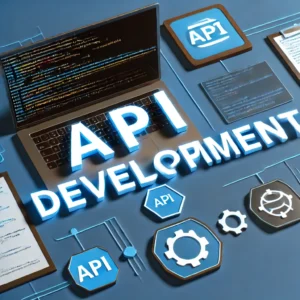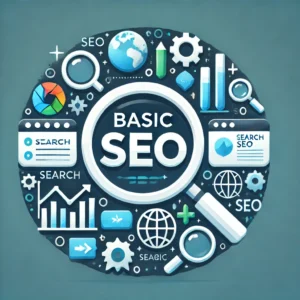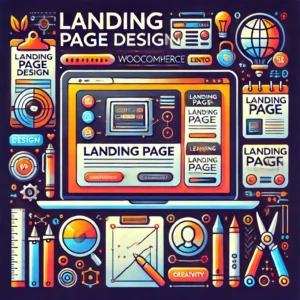
by ismetsahin | Feb 8, 2025 | Blog
Beginner’s Guide to APIs
Introduction
Application Programming Interfaces (APIs) have become the foundation of modern software. They connect different systems, services, and platforms, forming the digital glue that powers our connected world—from mobile banking apps, to social platforms, to smart home devices. Understanding APIs is essential for anyone looking to leverage data exchange, automation, or scalable architectures in today’s technology landscape.
This, “Beginner’s Guide to APIs“, comprehensive guide explains the core concepts of APIs, how they work, and why they’re critical to modern development. We’ll delve into common API styles (REST, GraphQL, SOAP), best practices for consuming or creating APIs, and security considerations. Whether you’re a developer, project manager, or entrepreneur, you’ll learn how to harness APIs effectively to enrich your applications and streamline workflows.
1. What Is an API?
An API (Application Programming Interface) is a set of definitions and protocols that outline how software components should communicate. You can think of it as a contract: one piece of software (the client) sends a request in a specific format, and another piece (the server) returns the correct data or action in a structured response.
Real-World Analogies
- Restaurant Menu: The menu (API documentation) lists what you can order, and the kitchen (server) prepares and returns what you requested.
- Electrical Socket: Devices “plug in” to a standardized interface, just as client applications access a standardized API.
APIs are vital for maintaining modularity, scalability, and integration in modern systems.
2. Why APIs Matter in Modern Development
APIs power almost every aspect of our hyper-connected world, enabling different software and hardware systems to exchange data and functionality seamlessly.
Key Advantages
- Integration: Connect microservices, cloud services, legacy systems, and third-party tools easily.
- Scalability: Separate system components so each can expand independently.
- Innovation: Build on top of existing platforms to create new features or products.
- Efficiency: Automate workflows, reduce duplication, and streamline data exchange.
In fact, many businesses adopt an API-first approach, designing and documenting their APIs before building the rest of the application. This approach fosters better architecture and simplifies future integrations.
3. Common Types of APIs
3.1 REST (Representational State Transfer)
REST is the most widely used style for web APIs, relying on stateless requests where each HTTP request contains all necessary information. Resources are accessed via URL endpoints like /api/users and manipulated using HTTP methods such as GET, POST, PUT, and DELETE. Responses often come in JSON.
3.2 SOAP (Simple Object Access Protocol)
An older but still utilized protocol, SOAP uses XML for requests and responses, offering robust features such as transactional integrity and formal service definitions. Large enterprises might stick to SOAP for mission-critical systems requiring strict standards.
3.3 GraphQL
Developed by Facebook, GraphQL enables clients to query exactly the data they need from a single endpoint. This solves over-fetching or under-fetching issues common with multiple REST endpoints.
3.4 Webhooks & Event-Driven APIs
Instead of continuously polling for data, webhooks let servers “push” updates to a client when specific events occur. This is ideal for real-time notifications such as “payment received” or “new order placed.”
4. How APIs Work: The Request-Response Cycle
In a typical web API flow:
- Client Sends a Request: Usually via HTTP(S), specifying an endpoint like
https://api.example.com/users and a method (GET, POST, etc.). - Server Processes: The server checks data, applies business logic, or queries databases.
- Server Responds: Returns structured data (often JSON) along with an HTTP status code.
A simple JSON response might look like:
{
"id": 123,
"username": "johndoe",
"email": "john@example.com"
}
5. Authentication and Authorization
Most APIs require authentication (verifying who you are) and authorization (verifying what you can do). Common methods:
- API Keys: A unique key passed in headers or parameters.
- OAuth 2.0: An industry standard that uses tokens to grant limited access on behalf of a user.
- JWT (JSON Web Tokens): Encodes user data in a signed token for stateless authentication.
- Basic Auth: Sends credentials (username/password) over HTTP, typically alongside TLS for security.
Best practices include using HTTPS, rotating keys/tokens regularly, and implementing robust access controls and logging.
6. Rate Limiting, Throttling, and Quotas
APIs often implement rate limits to guard against abuse and ensure server stability. This means limiting how many requests a single client can make in a given time span (e.g., 100 requests per minute).
- Throttling: Additional requests are delayed or blocked once the limit is reached.
- Quotas: A client might have monthly or yearly request quotas.
- Tiered Pricing: Paid plans may offer higher limits.
Clients must handle responses that indicate rate limits have been reached—often signaled by HTTP 429 (Too Many Requests)—and implement retry strategies or display user notifications.
7. Best Practices for Consuming APIs
If you’re integrating a third-party API (e.g., Google Maps, Twitter), consider the following:
- Read Documentation Thoroughly: Understand endpoints, authentication, data formats, and rate limits.
- Use Official SDKs: Many API providers offer libraries for common languages.
- Handle Errors Gracefully: Implement fallback logic for connectivity issues or unexpected status codes.
- Caching: Cache responses for a specified time if data doesn’t change frequently.
- Version Tracking: APIs evolve; watch for deprecations or changes in new versions.
8. Building Your Own API: Key Considerations
Whether for internal microservices or public consumption, designing an API requires careful planning.
8.1 Define Objectives and Audience
- Internal vs. External: Is the API for in-house services or third-party developers?
- API Scope: Which data/entities/functions will you expose?
8.2 Choose the Right Architecture
REST is often simpler for straightforward resource-centric designs, while GraphQL may excel for complex data retrieval patterns. SOAP might remain relevant in certain enterprise environments.
8.3 Endpoint Design and Consistency
- Readable Paths:
/api/v1/users, /api/v1/orders - HTTP Methods: GET for retrieve, POST for create, PUT/PATCH for update, DELETE for remove.
- Versioning: Maintain backward compatibility by labeling major changes with new versions.
8.4 Authentication and Security
- HTTPS: Encrypt all traffic.
- Token-Based Auth: OAuth 2.0, JWT, or similar methods for user-specific data.
- Data Validation: Sanitize and validate incoming data to prevent SQL injection or other attacks.
8.5 Documentation
Clear documentation is a hallmark of a great API. Tools like Swagger, OpenAPI, or Postman help generate interactive docs.
9. Testing and Monitoring Your API
Quality assurance is crucial for a reliable API.
- Unit Tests: Test individual functionalities or endpoints.
- Integration Tests: Ensure separate services or microservices communicate correctly.
- Load/Stress Testing: Check performance under high traffic or heavy data usage.
- Monitoring & Alerting: Use tools like Datadog or New Relic to track response times, error rates, and usage patterns.
10. Handling Errors and Status Codes
API responses should include relevant HTTP status codes:
- 200 OK: Successful operation.
- 400 Bad Request: The request was invalid or malformed.
- 401 Unauthorized: Missing or invalid authentication credentials.
- 404 Not Found: The requested resource doesn’t exist.
- 500 Internal Server Error: An unhandled issue on the server side.
Include a response body with a clear error message:
{
"error": {
"code": 400,
"message": "Invalid email format"
}
}
11. Versioning and Lifecycle Management
As your application evolves, so will your API. Changes can break existing clients if not managed well.
- Semantic Versioning:
v1, v2, etc., to signal major changes. - Deprecation Warnings: Communicate upcoming changes and timelines to developers.
- Changelog: Keep a record of modifications in each release.
Transparent lifecycle management fosters trust with users who rely on your API for their own applications.
12. Real-World API Use Cases
12.1 E-commerce Integration
An online store might integrate:
- Payment Gateways: Stripe, PayPal for secure transactions.
- Shipping Services: UPS, FedEx for label generation and tracking.
- Email Marketing: Sync users or order data with Mailchimp for targeted campaigns.
12.2 Social Media Aggregation
Brands often use social platform APIs to embed timelines, auto-post content, or analyze social metrics across Facebook, Twitter, or Instagram.
12.3 Cloud Storage and Collaboration
APIs from Dropbox or Google Drive let external apps manage user files, offering advanced collaboration or backup features within a unified workflow.
12.4 Internet of Things (IoT)
From smart fridges to industrial sensors, IoT devices expose APIs that let authorized apps read data or control settings, bridging the physical and digital worlds.
13. Microservices Architecture and APIs
In a microservices architecture, large applications are divided into smaller, self-contained services. Each service exposes an API for inter-service communication. This yields:
- Independent Development: Teams can build, deploy, and scale services autonomously.
- Greater Resilience: Failure in one service doesn’t bring down the entire application.
- Technology Flexibility: Each microservice can use the most suitable language or framework.
14. GraphQL vs. REST: Which to Choose?
Choosing between GraphQL and REST can be challenging. Consider:
- Use GraphQL if you have complex data relationships and want flexible queries that minimize round trips.
- Use REST if your data model is relatively straightforward and you prefer the simplicity of multiple endpoints for different resources.
Both can be highly effective; the final choice often depends on your team’s expertise, project complexity, and performance goals.
15. The Future of APIs: Trends and Predictions
APIs will continue evolving to support new technologies and user demands:
- Event-Driven and Streaming APIs: Real-time data feeds for IoT, finance, gaming, or interactive UIs.
- API Gateways and Aggregators: Unified “front doors” for microservices, handling authentication, load balancing, and routing.
- AI-Powered APIs: Off-the-shelf NLP or image recognition services integrated directly into applications.
- API Governance: Centralized standards and compliance checks within large organizations.
- Low-Code/No-Code Integrations: Visual drag-and-drop solutions that enable non-developers to build API-based workflows.
Conclusion
APIs are the engine driving modern connectivity, fueling automation, data exchange, and seamless integration across platforms. By mastering fundamental concepts—REST principles, authentication, rate limiting, and effective documentation—you open the door to creating or integrating services that scale dynamically and unlock new possibilities.
When consuming APIs, read documentation thoroughly, handle errors gracefully, and stay current with version changes. When building your own APIs, design with clarity, prioritize security, and support users with robust documentation and lifecycle management. With APIs as a core strategy, you empower your organization to innovate rapidly, collaborate across tech ecosystems, and deliver richer user experiences—all vital in a future where digital interconnectivity only grows.

by ismetsahin | Feb 8, 2025 | Blog
How to Create an Effective Brand Strategy
Introduction
A well-defined brand strategy is the cornerstone of any successful business in the modern era. Far more than just a logo or a tagline, your brand encapsulates the values, promises, and experiences you deliver to customers. By forming strong emotional connections and consistent messaging, your brand becomes a recognizable beacon that cuts through market noise, fosters loyalty, and drives long-term growth.
In an era of hyper-competition—where new startups emerge daily and large conglomerates expand their footprints—building a distinctive brand identity can make the difference between a fleeting presence and a sustainable legacy. Developing and maintaining a robust brand strategy requires a methodical, reflective process: understanding your audience, clarifying your vision, crafting cohesive visuals, and ensuring every touchpoint aligns with your core message.
This guide provides an in-depth roadmap for crafting an effective brand strategy. From identifying your brand’s purpose and defining your unique value proposition, to weaving consistent narratives across multiple channels, you’ll discover how each piece of the puzzle fits together. By the end, you’ll be equipped to build a brand that resonates in hearts and minds, stands out in crowded markets, and drives meaningful customer relationships.
1. Understanding the Foundations of a Brand
A brand is an intangible concept—shaped by perceptions, emotions, and associations—that represents your business in the marketplace. To create a strong brand strategy, start by articulating these foundational elements:
- Brand Purpose: Why do you exist beyond profit?
- Brand Vision: What long-term impact or change are you aiming to make?
- Brand Mission: How do you realize that vision in day-to-day operations?
- Brand Values: Which principles guide your decisions and behaviors?
- Brand Personality: What human-like traits define your brand’s tone?
These components form the “brand compass,” ensuring every action aligns with your identity and consistently resonates with your audience.
2. Market Research and Audience Insights
Before positioning your brand effectively, you need comprehensive knowledge of your market and the customers you aim to serve.
Conducting Thorough Market Research
- Competitive Analysis: Identify key competitors. Evaluate product offerings, messaging, and positioning.
- Industry Trends: Understand shifts in consumer behavior, new technologies, or regulations.
- Market Gaps: Pinpoint unmet needs or underserved niches where you can stand out.
Audience Profiling
- Demographic Data: Age, gender, location, income, education level.
- Psychographic Factors: Lifestyle, values, attitudes, and interests.
- Behavioral Insights: Online activity, buying habits, brand loyalties, and pain points.
- Customer Interviews: Directly speak to your target market for deeper, qualitative data.
The right mix of quantitative and qualitative insights enables you to segment your audience effectively and craft compelling messaging.
3. Crafting a Unique Value Proposition (UVP)
A unique value proposition succinctly states what you offer, who it’s for, and why it’s better or different from alternatives. It’s your promise to customers.
Elements of a UVP
- Target Audience: Whom do you serve, and who benefits most from your offerings?
- Problem or Desire: Which pain points or aspirations do you address?
- Solution: How do you solve that pain or deliver on the desired outcome?
- Differentiation: Why should a customer choose you over your competitors?
Your UVP should be clear, concise, and customer-focused. Feature it prominently on your website’s homepage or social bios to capture interest quickly.
4. Brand Personality and Tone of Voice
Brands are more memorable if they evoke human characteristics. This is where brand personality comes in—defining how your brand “acts” or “speaks.”
Defining Your Personality
- Adjectives Exercise: Pick three to five adjectives—e.g., “innovative,” “bold,” “friendly,” “authoritative,” “quirky.”
- Archetypes: Explore established archetypes like “The Hero,” “The Caregiver,” or “The Creator.”
Tone of Voice
Your brand’s tone is how you express personality in writing or speech:
- Formal vs. Casual: Professional and polished or relaxed and approachable?
- Energetic vs. Calm: Exclamation marks and dynamic language or understated and serene?
- Humorous vs. Serious: Witty and clever or direct and sober?
Ensure consistency in blog posts, social media, ads, emails, and more, reinforcing the same “voice” across all communication.
5. Visual Identity: Logos, Colors, and Typography
Design elements are the face of your brand. A cohesive visual identity can create immediate recognition and an emotional response.
Logo Design
- Simplicity: A clean, scalable design works across various mediums.
- Relevance: Reflect your industry, mission, or personality.
- Timelessness: Avoid overly trendy elements that may look outdated soon.
Color Palette
Color psychology matters—blue often signifies trust, red suggests energy, green can imply growth or sustainability. Choose 2–4 main colors that reflect your brand’s core attributes.
Typography
- Primary Font: Use for headings or large text; sets the overall typographic feel.
- Secondary Font: Body copy font; complements your primary font.
- Consistency: Keep fonts and colors uniform across your website, ads, packaging, etc.
Create a brand style guide documenting all visual standards so everyone (in-house teams or external partners) follows the same rules.
6. Brand Storytelling and Messaging
Stories help transform facts into emotional connections. People remember narratives more than product specs or lists of features.
Elements of a Brand Story
- Origin: Why and how you started.
- Challenges: Obstacles overcome along the way.
- Transformation: How you (and your customers) evolve throughout the journey.
- Vision for the Future: How do customers join you in achieving a shared mission?
Make sure your story and messaging are consistent across website content, social media updates, email campaigns, and more, emphasizing core values and benefits.
7. Multi-Channel Branding and Consistency
Customers often interact with your brand across many channels—social media, email, brick-and-mortar stores, apps, or events. Consistency across these channels is vital.
Key Channels to Consider
- Website: Serves as your digital hub. Reflect brand guidelines in design, copy, and UX.
- Social Media: Each platform may demand different content but must maintain a cohesive look and tone.
- Email Marketing: Consistent templates, color schemes, and brand voice in newsletters or promos.
- Physical Touchpoints: Store design, packaging, business cards—every physical asset should mirror your brand identity.
For true omni-channel integration, ensure offline and online experiences align seamlessly. If someone sees an Instagram ad, then visits your store, the brand aesthetic and messaging should feel united.
8. The Role of SEO and Digital Marketing in Brand Building
While SEO is often seen as a technical discipline, it also shapes your online brand presence. Higher visibility in search results means more people discover you, and consistent, relevant content fosters a sense of authority and trust.
SEO Branding Tactics
- Branded Keywords: Optimize for queries specifically including your brand name or tagline.
- Content Marketing: Publish blog posts, guides, or videos showcasing your expertise.
- Link Building: Partner with reputable sites; secure quality backlinks to boost credibility.
- Local SEO: If you operate physically, keep local citations and Google Business Profiles updated for brand authority in your area.
Social Media and PPC
- Social Consistency: Uniform handles, profile images, and brand voice across platforms.
- Paid Ads: Use design and copy that reflect your brand identity and tone.
- Influencer Collaborations: Work with influencers who align with your values, expanding your brand reach.
9. Internal Branding and Company Culture
Effective branding starts internally. Employees are your best ambassadors when they truly “live” your brand values.
Educating and Inspiring Employees
- Onboarding Programs: Introduce new hires to your brand story and values from day one.
- Ongoing Communication: Reinforce values through team meetings, internal newsletters, or Slack channels.
- Brand Ambassadors: Encourage employees to share updates on social media or represent the brand at events.
A healthy company culture that reflects your brand mission (e.g., focus on sustainability or excellent customer service) ensures every customer interaction becomes a chance to reinforce your core identity.
10. Measuring Brand Equity and Performance
Tracking how effectively your strategy is performing helps you refine it over time. Brand equity refers to the value your brand adds to a product or service, shaped by customer perception, loyalty, and recognition.
Metrics to Monitor
- Brand Awareness: Survey-based recall tests, direct traffic volume, and social mentions.
- Brand Perception: Tools like Net Promoter Score (NPS) and social listening to gauge sentiment.
- Engagement: Blog comments, social shares, email open rates, time on site.
- Conversion Rates: How many leads or visitors become actual customers?
- Customer Lifetime Value (LTV): Indicates loyalty and repeated business.
Set clear KPIs and compare actual data against goals regularly, adjusting your brand strategy as needed.
11. Adapting Your Brand to Market Changes
Markets shift, competitors rise, technology evolves, and consumer tastes change. Your brand strategy should be flexible enough to adapt rather than remain static.
Rebranding vs. Brand Refresh
- Brand Refresh: Minor tweaks to visuals and messaging; you keep the same fundamental identity.
- Rebranding: A thorough overhaul—sometimes including a new name or core identity—to align with a significantly changed audience or direction.
Signs you may need to evolve your brand include declining sales, misaligned brand image, or outdated values that no longer resonate with your core market.
12. Case Studies: Brands That Excel
Brands like Apple, Nike, and Airbnb are heralded for building strong emotional connections through consistent visuals, compelling stories, and well-defined values. Niche players like Patagonia or Everlane likewise show how clarity in mission—such as sustainability or transparency—can win fiercely loyal followings.
These success stories illustrate the power of a cohesive, purpose-driven approach to branding. Study them to glean insights you can adapt for your unique situation.
Conclusion
Developing an effective brand strategy is a journey involving introspection, planning, and ongoing adaptation. By starting with foundational elements—purpose, vision, mission, values, and personality—you anchor your brand in authenticity. Then, thorough audience research, a distinct UVP, consistent tone, and cohesive visuals pull everything together.
Key takeaways include:
- Start with Purpose: Know why you exist and let that guide all decisions.
- Know Your Audience: Research who you serve and how best to resonate with them.
- Be Consistent: Ensure visuals, messaging, and experiences stay uniform across all channels.
- Tell a Story: Engage hearts and minds through compelling narratives.
- Measure and Adapt: Continuously track brand performance and be ready to pivot.
By following these principles, your brand becomes an asset greater than any single product or service, forging lasting connections that stand the test of time.

by ismetsahin | Feb 8, 2025 | Blog
Top Web Development Trends in 2025
Introduction
As we approach the mid-2020s, the field of web development has become more dynamic and diverse than ever before. Once dominated by simple HTML pages, the modern web now hosts interactive experiences, powerful applications, and immersive technologies that rival desktop and mobile apps. From serverless computing and headless architectures to artificial intelligence and augmented reality, new trends emerge at an ever-quickening pace, fundamentally altering how developers build and how users experience online platforms.
In 2025, the lines between what is “web,” “mobile,” or “desktop” are becoming increasingly blurred. Businesses and consumers alike demand universal accessibility—websites and web apps that function seamlessly across devices, locations, and contexts. The push toward faster performance and more personalized experiences remains constant, with progressive enhancements like Progressive Web Apps (PWAs), WebAssembly (WASM), and AI-driven content personalization leading the charge. Moreover, the emphasis on privacy and security has never been more critical, as data breaches and complex cyber threats loom on the horizon.
This article delves deeply into the top web development trends for 2025, offering insights on why they matter, how they work, and what web developers, project managers, and businesses should focus on to remain competitive. Whether you’re a seasoned developer aiming to stay ahead or a tech-savvy entrepreneur exploring next-generation possibilities, these trends will shape your strategy for building modern, efficient, and impactful web experiences in the years to come.
Below, we’ll examine key factors such as headless CMS, serverless architecture, AI-driven personalization, progressive web applications, WebAssembly, low-code platforms, augmented and virtual reality, enhanced security, and sustainable development—all technologies and methodologies that are transforming the web as we know it. By understanding and adopting these trends, you can position your projects and skill sets at the forefront of innovation.
1. The Emergence of Headless and Decoupled Architectures
Headless architectures—sometimes called decoupled systems—separate the front-end (what users see and interact with) from the back-end (where data is managed and stored). This approach provides a high level of flexibility, allowing content to be published across multiple platforms, from traditional websites and mobile apps to wearables, IoT devices, and even VR/AR interfaces.
Why It Matters for 2025
- Omnichannel Delivery: As the ways people consume digital content expand, organizations need the ability to push consistent content across various devices without replicating efforts.
- Future-Proofing: A decoupled back-end means you can upgrade or change front-end frameworks, design systems, or user experiences without disrupting the core database.
- Improved Performance: By decoupling, each layer can be optimized independently, often resulting in faster load times and more streamlined user experiences.
Practical Implementation: Tools like Strapi, Contentful, and Sanity provide flexible back-end management, while front-end frameworks—React, Vue, or Next.js—pull data via APIs. This approach encourages microservices or micro-frontend designs, where each component can be scaled or maintained independently.
2. Serverless Computing Takes Center Stage
Serverless computing—offered by platforms like AWS Lambda, Google Cloud Functions, and Azure Functions—lets developers write and deploy code without worrying about the underlying server infrastructure. Instead of managing servers around the clock, the cloud provider handles provisioning resources on-demand.
Key Benefits
- Cost-Effectiveness: You pay only for the compute time you use.
- Scalability: Functions automatically scale up during high traffic and scale down when traffic is low.
- Reduced Operational Complexity: Focus on core logic without the overhead of server maintenance.
Challenges to Note: Occasional cold starts can cause slight delays, and heavy reliance on a specific cloud provider may lead to vendor lock-in. Coordinating multiple serverless functions in complex workflows can require additional orchestration tools.
3. AI-Driven Personalization and Automation
Artificial intelligence (AI) and machine learning (ML) are no longer niche concepts. By 2025, AI-powered personalization is expected to be a standard feature of many mid- to large-scale websites, delivering more tailored content, product suggestions, and user interfaces.
Personalization in Action
- Dynamic Recommendations: E-commerce stores can analyze user behavior to suggest products in real-time.
- Adaptive User Interfaces: Layouts, color themes, or font sizes might automatically change based on user preferences.
- Smart Chatbots: Advanced chatbots using NLP handle queries, guide purchases, and offload support tasks.
In the back-end, AI can automate tasks like fraud detection, inventory forecasting, or customer segmentation. Tools like TensorFlow.js allow developers to run ML models directly in the browser, bringing personalization even closer to the user’s device.
4. Progressive Web Apps (PWAs) for Offline and App-Like Experiences
Progressive Web Apps (PWAs) combine the reach and flexibility of the web with many of the capabilities of native apps—offline availability, push notifications, and a home-screen icon. By 2025, PWAs will be the norm for businesses seeking an alternative to building separate native apps.
Notable Advantages
- Offline Functionality: Using Service Workers, PWAs cache essential files for offline access.
- Push Notifications: Real-time alerts about updates, sales, or new content.
- Enhanced Performance: Caching strategies lead to faster load times and better SEO.
Enterprise Adoption: Many large and small businesses have adopted or are experimenting with PWAs to reduce development costs and broaden device compatibility.
5. WebAssembly (WASM) Unlocking Native-Like Performance
WebAssembly (WASM) is a low-level binary format that runs in modern browsers at near-native speed. Developers can compile languages like C, C++, or Rust to the web, enabling computationally intensive applications—like image editors, 3D rendering, or simulations—to operate in-browser without major performance hits.
Use Cases
- High-Performance Gaming: Enables advanced 3D games running smoothly in the browser.
- Complex Data Visualization: Faster processing of large datasets for real-time analytics.
- Cryptography & Video Encoding: CPU-intensive tasks without specialized desktop apps.
With major browser vendors fully supporting WASM, it’s poised for widespread adoption, blurring the lines between native and web applications.
6. Rise of Low-Code/No-Code Development Platforms
Low-code and no-code platforms democratize development by allowing non-technical or semi-technical individuals to build functional websites and apps through visual interfaces. These platforms range from basic site builders like Wix or Webflow to sophisticated enterprise solutions.
Why They’re Gaining Traction
- Shorter Development Cycles: Rapidly prototype and launch MVPs.
- Lower Costs: Fewer dedicated developer hours for simpler projects.
- Citizen Developers: Empower marketers and project managers to build or update apps without coding.
Limitations: Potential constraints on customization, risk of vendor lock-in, and possible performance issues for complex scenarios. However, their expanding features and AI integration will likely see more robust growth by 2025.
7. Voice Search and Conversational Interfaces
With technologies like Google Assistant, Amazon Alexa, and Apple Siri advancing, voice search and conversational interfaces are becoming standard web capabilities. By 2025:
- Voice-Optimized SEO: Content will adapt to longer, more natural speech queries.
- Conversational UI: Users will interact with chatbots or voice-enabled navigation to find information.
- Improved Accessibility: Voice support benefits visually impaired users and compliance with accessibility regulations.
Developers integrate features using the Web Speech API or third-party libraries for advanced speech recognition and dialogue management.
8. Enhanced Focus on Security and Privacy
Cyber threats evolve in tandem with technology, making web security a perpetual priority. In 2025, expect an even stronger emphasis on:
- HTTPS Everywhere: TLS encryption has become the baseline standard for data in transit.
- Advanced Authentication: Biometric logins, multi-factor authentication, and zero-trust frameworks.
- Data Privacy Regulations: Compliance with regional regulations (GDPR, CCPA) plus potential new privacy laws on the horizon.
- AI-Based Threat Detection: Detect anomalies in real-time, blocking suspicious activity.
9. AR/VR and the Metaverse Integration
Augmented Reality (AR) and Virtual Reality (VR) have made strides, setting the stage for metaverse-like experiences on the web. WebXR standards enable immersive 3D interactions directly in browsers.
Potential Use Cases
- E-Commerce: Virtual try-ons, 3D showrooms, interactive product demos.
- Education & Training: Immersive simulations for students or employees.
- Social Interactions: Persistent virtual spaces for real-time collaboration or entertainment.
Such experiences demand more advanced hardware, bandwidth, and 3D development skills, pushing developers to adopt new tools and frameworks.
10. Micro Frontends and Modular Development
Extending microservices to the front-end, micro frontends split a large UI into smaller, independently deployable parts. Rather than a single monolithic front-end, you have multiple modules, each with its own codebase and deployment pipeline.
Benefits of Micro Frontends
- Scalability: Different teams can work on separate front-end modules.
- Maintainability: Smaller codebases are easier to maintain and update.
- Reduced Risk: A failing module doesn’t necessarily break the entire front-end.
- Tech Flexibility: Each module can use a different framework if desired.
11. Growing Importance of Web Performance Optimization
Performance optimization is an evergreen priority, with Core Web Vitals becoming key ranking factors. By 2025, developers must refine performance strategies for mobile devices and beyond.
Key Strategies
- Code Splitting and Tree Shaking: Only load necessary code.
- Lazy Loading: Defer non-critical resources until needed.
- CDN Utilization: Serve content from global edge locations.
- Caching & Preloading: Leverage offline capabilities for PWAs.
- Efficient Rendering: Minimize reflows and repaints with careful DOM manipulation.
12. Sustainable and Ethical Web Development
Environmental awareness is pushing developers to consider eco-friendly coding and green hosting. Data centers consume immense energy, prompting a reevaluation of best practices.
Key Approaches
- Minimize Resource Use: Smaller image sizes, compressed videos, and leaner code.
- Green Hosting Providers: Those using renewable energy or carbon offsets.
- Ethical Design: Respect user data and integrate accessibility from the start.
- Efficient Infrastructure: Use serverless or container-based solutions to reduce always-on server usage.
Conclusion
The web development landscape in 2025 is marked by flexibility, scalability, intelligence, and immersion. From the decoupled nature of headless CMS to the near-native speeds of WebAssembly and the ubiquity of AI-driven personalization, developers are navigating a rich, complex ecosystem where innovation happens at breakneck speed.
By staying informed and adopting the best-fit trends for your projects, you can create web experiences that resonate with evolving user expectations—and prepare your organization to thrive in the next wave of digital transformation. The future demands solutions that are fast, accessible, intuitive, secure, and mindful of environmental impact.

by PRAKSIS AI | Nov 19, 2023 | Blog
Hello World! Getting Started with Web Development
Hello World! When you start learning web development, “Hello, World!” is often the first phrase displayed on your screen. It’s a symbolic beginning to a journey into the online world, where websites are becoming more dynamic, interactive, and intelligent every day.
Today, the internet is no longer just a space for sharing information; it’s a platform for creating immersive experiences, connecting people, and driving innovations in every field. In this article, we’ll introduce web development basics, along with a look at the exciting future of the web.
1. Understanding Web Development Basics
Web development is the process of creating websites and web applications, which are the backbones of our digital world. It involves two main areas:
- Frontend Development: This is everything users see and interact with on a website, like text, images, buttons, and layouts. Frontend developers use HTML, CSS, and JavaScript to bring these elements to life in visually engaging ways.
- Backend Development: The backend is the “behind the scenes” part of a website, managing data and user requests on the server side. Backend developers use programming languages like Python, PHP, and Node.js to process data and make web applications function smoothly.
2. Writing Your First Line of Code
Starting with “Hello, World!” is a rite of passage in programming. To get a quick taste of coding, open a text editor and type the following code:
Save this file as index.html and open it in a web browser. You’ll see “Hello, World!” displayed, marking your entry into the world of web development!
3. The Foundations: HTML, CSS, and JavaScript
- HTML (HyperText Markup Language): HTML structures the content on a webpage. It tells the browser what each part of the content is, like headers, paragraphs, and links.
- CSS (Cascading Style Sheets): CSS brings style to HTML. It allows you to control layout, colors, fonts, and other visual aspects of the website, creating an engaging experience.
- JavaScript: JavaScript makes websites interactive, enabling animations, dynamic content, and form validation. It’s the backbone of interactivity and is a vital skill for any web developer.
4. The Future of Web Technology: Where Are We Headed?
Web development is evolving at a rapid pace, shaping how we interact with the world around us. Here’s a glimpse into where web technology is headed:
- Artificial Intelligence and Machine Learning: AI is becoming deeply integrated into the web. From chatbots to personalized content, AI enables more responsive and intuitive user experiences. Machine learning models embedded in websites are helping to predict user needs and provide tailored recommendations in real-time.
- The Rise of Progressive Web Apps (PWAs): Progressive Web Apps offer the experience of a native app within a browser. They’re fast, reliable, and available offline, making them a popular choice for businesses. PWAs are expected to dominate as they bridge the gap between web and mobile apps.
- Internet of Things (IoT) Integration: As devices become interconnected, web technologies are advancing to support IoT, creating “smart” web applications that can interact with IoT-enabled devices. This brings new opportunities in fields like healthcare, smart homes, and wearable tech.
- Blockchain and Web 3.0: The decentralized web, or Web 3.0, is an exciting frontier. Blockchain technology is paving the way for decentralized applications (dApps), which operate without a central authority. Web 3.0 promises to create a more open and user-controlled internet, impacting everything from finance to social media.
- Enhanced Cybersecurity: With more data flowing across the web, security is a top priority. Future web technologies are focusing on advanced encryption, AI-driven threat detection, and user-controlled data privacy, empowering users to interact with the internet more safely.
- Augmented Reality (AR) and Virtual Reality (VR) Experiences: AR and VR are transforming web experiences by creating immersive, 3D environments. Imagine browsing an e-commerce website where you can “try on” clothes virtually or explore a museum from the comfort of your home. AR and VR are making the internet a more interactive and experiential space.
5. Keep Learning and Experimenting
Web development is an exciting field because it’s always evolving. Start by experimenting with basic HTML, CSS, and JavaScript, and gradually explore new technologies like AI, blockchain, and AR. The more you practice, the more creative you can get, crafting experiences that not only engage users but also contribute to the future of the internet.
Conclusion
From “Hello, World!” to creating fully functional, intelligent websites, the journey of a web developer is both challenging and rewarding. As web technologies advance, developers are at the forefront of shaping the future of the online world, where the web becomes more responsive, secure, and interconnected.
Happy coding, and welcome to the future of the web!

by PRAKSIS AI | Feb 20, 2022 | Blog
10 Tricks for Writing a Captivating Web Article. Writing a captivating web article is more than just putting words on a page—it’s about connecting with readers, guiding them through your content, and keeping them engaged from start to finish. In a world where attention spans are shrinking and competition for views is fierce, creating an article that stands out is essential. Whether you’re a seasoned writer or a beginner, mastering a few simple tricks can make all the difference in how your content is received.
In this article, we’ll dive into 10 proven techniques to craft web articles that capture readers’ interest, improve SEO, and encourage interaction. From writing irresistible introductions to strategically incorporating visuals and calls to action, these tips will help you transform your writing and leave a lasting impact on your audience. Let’s get started!
1. Start with a Catchy Hook
Your first sentence is your only chance to make a lasting first impression. The hook is essential because it determines if readers will stay engaged or bounce to another page. To create a strong hook:
- Ask a Question: For instance, “Are you tired of writing articles that don’t get any traffic?” This makes readers curious and prompts them to think.
- Use a Surprising Fact or Statistic: Facts like, “90% of articles are never read to completion,” can spark interest and make readers want to keep reading to learn more.
- Share a Relatable Story: Stories make your article personable and relatable, drawing readers into the narrative. For example, “When I started my blog, I struggled to get anyone to read my posts…”
A well-crafted hook sets the stage for the rest of the article, compelling readers to continue.
2. Structure with Headings and Subheadings
Good structure improves both readability and SEO. Headings and subheadings organize content, making it easier for readers and search engines to understand the main points.
- Use H2 and H3 Tags for Clarity: H2 tags should highlight the main sections, and H3 tags can be used for subsections. Clear headings allow readers to scan and find the content most relevant to them.
- Incorporate Keywords in Headings: This helps search engines identify the main themes of each section and improves the chances of your article ranking higher.
- Avoid Long Titles: Keep headings short and relevant. Long, confusing titles can overwhelm readers and reduce clarity.
Organizing content with headings and subheadings is essential for retaining reader attention and optimizing the article for search engines.
3. Use Bullet Points and Lists
Lists and bullet points improve readability by breaking down complex information into digestible bits. Readers are more likely to engage with articles that are easy to scan.
- Highlight Key Information: Use lists to emphasize key points, such as step-by-step instructions, benefits, or statistics.
- Create Visual Hierarchy: Lists give the eye something to “land on,” creating visual contrast within the content and making it feel less dense.
- Increase Reader Engagement: Lists and bullet points are often where readers pause to absorb information, so placing important facts here can increase retention.
Lists are ideal for keeping readers engaged and improving the article’s flow.
4. Incorporate Visuals
Visuals make content more engaging and help convey complex ideas quickly. Articles with visuals tend to have higher engagement rates and retain readers longer.
- Use Relevant Images: Ensure images enhance the content. For instance, an infographic explaining data or an example of a design concept can help readers understand complex ideas.
- Optimize Image Sizes: Large images can slow down your website, affecting user experience and SEO. Compress images before uploading to maintain load speed.
- Add Alt Text for Accessibility and SEO: Alt text not only improves accessibility for visually impaired readers but also helps search engines understand the image content, improving your article’s ranking potential.
Visuals are a valuable addition to web articles, making content more appealing and digestible.
5. Write in Short Paragraphs
Short paragraphs make content more readable, especially on mobile devices. Large blocks of text can appear overwhelming and deter readers from continuing.
- Limit Paragraphs to 2-3 Sentences: Break up long paragraphs to create breathing room within your content.
- Use Line Breaks Strategically: Separate ideas with line breaks, and don’t be afraid to leave white space for a cleaner look.
- Start Each Paragraph with Key Points: Readers often skim, so starting with the main point makes it easier for them to understand the gist quickly.
Short paragraphs keep readers engaged and prevent them from feeling overwhelmed.
6. Make it Interactive
Interactive elements add depth to an article and keep readers engaged longer. They also provide a more personalized experience, encouraging readers to explore your content.
- Add Polls or Quizzes: These are excellent for engaging readers and encouraging them to think about your content.
- Embed Interactive Content: Use tools like embedded Tweets, Instagram posts, or videos to add variety.
- Allow for Reader Feedback: Let readers comment or react to your content. This not only builds engagement but also gives insight into your audience’s thoughts.
Interactive elements enhance user engagement, making the article memorable and shareable.
7. Include a Strong Call to Action (CTA)
A well-placed CTA prompts readers to take action, whether it’s to subscribe to a newsletter, comment, or share the article. A strong CTA can make a significant difference in engagement and audience growth.
- Make CTAs Clear and Direct: For instance, “Subscribe now for more insights!” is straightforward and tells readers exactly what to do.
- Place CTAs Naturally: Don’t overwhelm readers with constant CTAs. Place them at the end of the article or at key points where readers might want more.
- Use Action-Oriented Language: Words like “discover,” “join,” and “start” encourage readers to act.
CTAs guide readers to engage more deeply with your content, turning casual readers into loyal followers.
8. Use Keywords Naturally
Keywords are essential for SEO, but overusing them can harm readability and rank. Focus on naturally incorporating keywords to keep the article flow smooth and authentic.
- Place Keywords in Key Areas: Include keywords in headings, intro, conclusion, and body text where they naturally fit.
- Use Variations of Your Keywords: Synonyms and related keywords provide depth and make the content feel natural. For instance, use “website” alongside “site” and “web page.”
- Avoid Keyword Stuffing: Search engines penalize keyword stuffing. Prioritize readability, using keywords as a guide rather than a requirement.
Using keywords strategically improves SEO while maintaining the article’s natural tone and readability.
9. Link to Reliable Sources
Linking to high-quality, reputable sources builds credibility and adds value for readers. It also signals to search engines that your content is trustworthy.
- Link to Authoritative Websites: Reference industry leaders or respected organizations, as this enhances your article’s reliability.
- Use Sources that Add Value: Ensure every link is relevant to the topic and provides additional information or context.
- Avoid Excessive Linking: Too many links can distract readers. Use links sparingly and strategically.
High-quality links strengthen your article’s credibility and boost SEO, making it a trusted resource.
10. Optimize for SEO with Meta Descriptions
Meta descriptions are summaries that show up in search engine results, helping readers decide whether to click. A well-crafted meta description increases the click-through rate.
- Keep Meta Descriptions Between 150-160 Characters: Concise descriptions give readers a clear idea of what to expect.
- Include Keywords Naturally: Add your main keyword to help search engines connect your content to relevant searches.
- Highlight Benefits: Describe why readers should click. For instance, “Learn 10 tricks to make your web articles engaging and SEO-friendly.”
Optimizing meta descriptions is an essential step for attracting readers through search engines.
Conclusion
Writing a captivating web article is an art that combines SEO knowledge, reader psychology, and clear communication. By following these 10 tricks, you’ll create content that ranks well on search engines, engages readers, and builds a loyal audience.
Happy writing!

by PRAKSIS AI | Feb 20, 2022 | Blog
Introduction
How to Create and Publish an E-Book: A Step-by-Step Guide. Creating an e-book is one of the most effective ways to share knowledge, build authority, and potentially generate passive income. Whether you’re an entrepreneur, blogger, or author, publishing an e-book opens doors to new audiences and business opportunities. In this guide, we’ll take you through each step of the e-book creation and publishing process—from ideation and writing to formatting, publishing, and promoting your e-book successfully. Let’s get started!
1. Choose Your Topic and Define Your Audience
The foundation of a successful e-book is a topic that’s valuable, relevant, and well-targeted.
- Identify Your Niche: Choose a subject that aligns with your expertise and interests. Topics that solve a specific problem or answer pressing questions are often the most engaging.
- Define Your Audience: Who will benefit from your e-book? Create a clear profile of your ideal reader, including demographics, pain points, and needs.
- Research Your Market: Investigate if similar e-books exist. Look for gaps in existing content or areas where you can add unique insights. Tools like Amazon’s Kindle marketplace and Google Trends can help identify popular topics and unmet needs.
2. Plan and Outline Your Content
A well-organized outline is crucial for creating a cohesive and readable e-book.
- Organize Your Main Ideas: Break down your topic into chapters or sections. Each chapter should address a specific aspect of your topic, building logically from one to the next.
- Create a Chapter-by-Chapter Outline: List the primary points, examples, and subtopics for each chapter. This outline will serve as your roadmap, making the writing process smoother and more efficient.
- Set Clear Goals for Each Chapter: Think about what you want readers to learn or accomplish by the end of each section. These goals will keep your content focused and impactful.
3. Write Your E-Book
With a solid outline in place, it’s time to start writing. Focus on clarity, readability, and value.
- Choose a Writing Style: Match the tone of your e-book with your audience. For educational topics, a conversational tone often works best, while a formal tone may suit more technical subjects.
- Write in Short, Manageable Sections: Avoid overwhelming readers with long paragraphs or dense sections. Break up text with subheadings, lists, and bullet points to improve readability.
- Edit as You Go: Once you’ve finished each chapter, do a quick edit to catch any major issues. This will make the final editing process easier.
4. Edit and Proofread Thoroughly
Editing is essential to ensure that your e-book is polished, clear, and error-free.
- Take a Break Before Editing: Step away from your manuscript for a day or two before starting to edit. This gives you fresh eyes and helps you catch mistakes.
- Self-Edit for Structure and Flow: Look for any inconsistencies, unclear sections, or awkward transitions. Make sure your ideas flow smoothly from one section to the next.
- Consider Hiring a Professional Editor: A professional editor can improve the readability and professionalism of your e-book. You can find freelance editors on platforms like Upwork or Reedsy.
5. Design a Compelling Cover
Your e-book cover is the first thing potential readers will see. A professional, eye-catching cover can make a big difference in sales and downloads.
- Use a Design Tool or Hire a Designer: If you have design skills, you can create a cover using tools like Canva, Adobe InDesign, or Photoshop. Otherwise, consider hiring a designer on platforms like Fiverr or 99designs.
- Follow Design Best Practices: Choose fonts, colors, and imagery that match your topic and genre. Keep the cover simple and readable, especially when viewed as a thumbnail.
- Include a Clear Title and Subtitle: Make sure the title is easy to read and conveys the main benefit or theme of the e-book. A subtitle can clarify what the e-book offers, especially if the title is creative.
6. Format Your E-Book for Multiple Platforms
Proper formatting ensures that your e-book looks professional and is easy to read across different devices.
- Choose an E-Book Format: The two most common formats are ePub and Mobi. ePub is compatible with most devices, while Mobi is optimized for Amazon Kindle.
- Use Formatting Tools: Tools like Scrivener, Vellum (for Mac), or Calibre can simplify the formatting process, making it easy to convert your document into ePub or Mobi.
- Optimize for Readability: Use consistent fonts, proper spacing, and clear chapter breaks. Avoid complicated layouts or images that may not display correctly on smaller screens.
7. Select a Publishing Platform
There are several e-book publishing platforms available, each with different advantages. Choose one (or more) based on your goals and target audience.
- Amazon Kindle Direct Publishing (KDP): Amazon is the largest e-book marketplace, making it an ideal choice for most authors. With KDP, you can self-publish and reach millions of readers worldwide.
- Apple Books: Apple Books is another popular platform, especially if you’re targeting an audience that uses Apple devices.
- Smashwords: This platform distributes e-books to various retailers, including Barnes & Noble, Apple Books, and Kobo, giving your e-book wider distribution.
- Direct Publishing on Your Website: You can also sell your e-book directly from your website, allowing you to retain full control over pricing and profits. Tools like Payhip or Gumroad make it easy to sell digital downloads directly to readers.
8. Set a Pricing Strategy
Pricing your e-book correctly is crucial for maximizing sales and reader engagement.
- Research Competitors’ Pricing: Look at similar e-books to determine a reasonable price range. Popular non-fiction e-books are typically priced between $2.99 and $9.99.
- Consider Your Goals: If your goal is to reach a large audience, a lower price might attract more readers. If you’re targeting a niche market with high value, a higher price may be appropriate.
- Experiment with Pricing: Some platforms, like Amazon, allow you to adjust your price over time. Experiment with different price points to see what resonates best with your audience.
9. Publish Your E-Book
Once your e-book is formatted and priced, you’re ready to publish!
- Follow Platform-Specific Steps: Each platform has a specific process for uploading and publishing e-books. For example, with Amazon KDP, you’ll need to set up a KDP account, upload your files, and provide necessary metadata like the book description and keywords.
- Optimize Your Book Description: Write a compelling description that highlights the main benefits and key takeaways. This is your chance to persuade readers to download or buy your e-book.
- Select Keywords and Categories: Choose keywords and categories that accurately reflect your content, as these will help readers find your e-book in search results.
10. Promote Your E-Book
Publishing your e-book is only the beginning. Effective promotion is essential to reach a wider audience and maximize sales.
- Leverage Social Media: Share your e-book on social platforms like Twitter, Facebook, LinkedIn, and Instagram. Use relevant hashtags and tag influencers who may be interested in sharing your e-book.
- Build an Email List: An email list allows you to reach an audience directly. Share exclusive discounts or bonuses with your subscribers to encourage downloads.
- Use Paid Advertising: Consider using Amazon Ads, Facebook Ads, or Google Ads to reach a wider audience. Paid ads can be particularly effective when launching an e-book.
- Engage with Book Reviewers and Influencers: Reach out to bloggers, book reviewers, and influencers in your niche. Positive reviews and recommendations can significantly boost your e-book’s visibility and credibility.
Conclusion
Creating and publishing an e-book can be a rewarding experience, whether you’re aiming to build your brand, share your expertise, or generate passive income. By following these ten steps—from topic selection and writing to publishing and promotion—you’ll be well on your way to creating a professional, high-quality e-book that attracts and engages readers. Start your journey today, and let your ideas reach a global audience!











